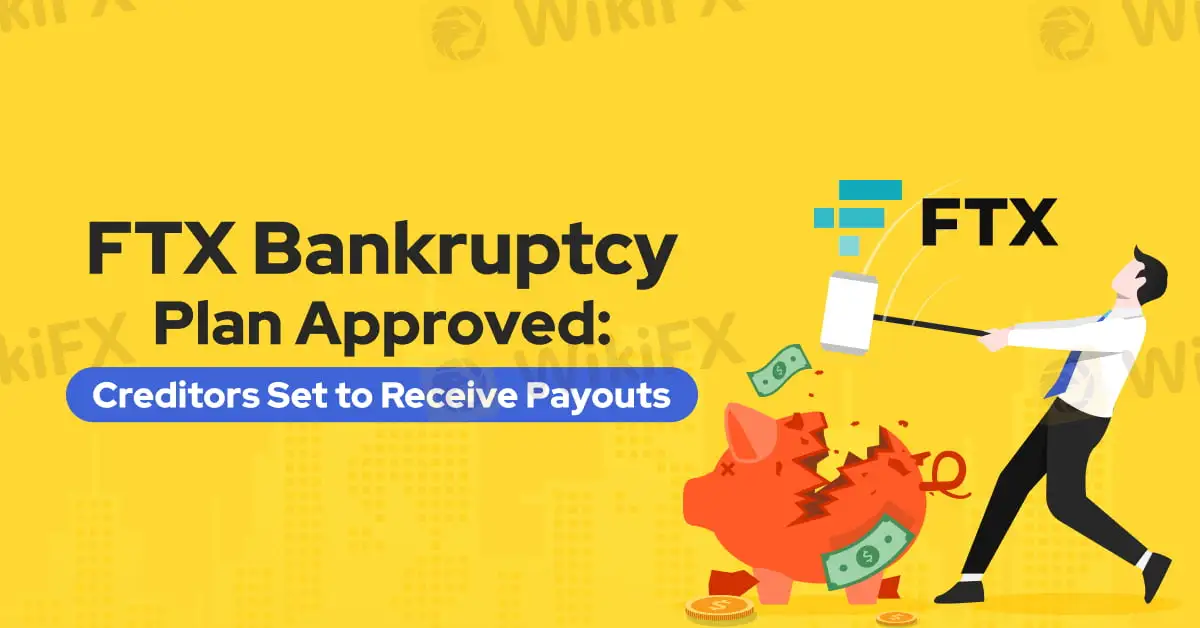FTX Bankruptcy Plan Approved: Creditors Set to Receive Payouts
Abstract:A U.S. bankruptcy court has given the green light to FTX’s reorganization plan, signalling the end of the two-year legal process following the cryptocurrency exchange's collapse in late 2022 amid widespread fraud allegations. This decision sets the stage for the distribution of funds to the company’s creditors.

A U.S. bankruptcy court has given the green light to FTX‘s reorganization plan, signalling the end of the two-year legal process following the cryptocurrency exchange's collapse in late 2022 amid widespread fraud allegations. The decision, made by Judge John Dorsey of the U.S. Bankruptcy Court for the District of Delaware, sets the stage for the distribution of funds to the company’s creditors.
During a hearing, Judge Dorsey approved the plan, which promises that 98% of creditors will receive at least 118% of their claims in cash. The plan gained strong support, with approximately 94% of creditors in the “dotcom customer enment claims” class—representing around $6.83 billion in claims—voting in favour of the reorganization. Judge Dorsey commended the restructuring process, describing it as a “model case” for handling complex Chapter 11 bankruptcies.

Despite this progress, the plan has not been without controversy. Sunil Kavuri, representing FTXs largest creditor group, voiced concerns over the proposed cash payouts. Kavuri argued that creditors should receive their compensation in cryptocurrency, citing potential tax liabilities tied to cash distributions as a significant issue. He suggested that the payouts in digital assets might mitigate these concerns.
However, David Adler, an attorney for a group of creditors, countered these objections. Adler pointed out that FTX lacked the necessary cryptocurrency reserves to offer in-kind distributions. Judge Dorsey ultimately rejected the idea of repaying creditors in cryptocurrency, particularly in the exchange's native token, FTT. The judge underscored that the value of FTT had effectively fallen to zero since the token's value was closely tied to the now-defunct exchange, leaving no prospect for it to regain any value in the future.
In recent weeks, FTT saw a brief resurgence in its market value, rising by over 70% to reach $2.70—its highest price since March 2024. As of September 30, there were around 30,600 FTT holders, and the tokens market capitalization hovered at approximately $330 million. However, FTT had been excluded from FTX's repayment plan in July 2024 due to its “equity-like characteristics,” further complicating its role in the bankruptcy proceedings.
Plans for a potential reboot of FTX, dubbed “FTX 2.0,” were considered but eventually shelved. According to court documents, no investors showed interest in committing the necessary capital to relaunch the platform.
FTX‘s downfall came under the leadership of its former CEO, Sam Bankman-Fried, who was convicted of fraud in November 2023 and sentenced to 25 years in prison. Several other executives involved with FTX, including Caroline Ellison, Gary Wang, and Nishad Singh, also faced legal consequences, with Singh’s sentencing expected later this month.
This marks the final chapter in one of the most high-profile collapses in the cryptocurrency world, as the creditors now move closer to recovering a portion of their lost funds.

Read more

Tether Reacts to MiCA Regulations as Crypto.com Delists USDt in Europe
Tether criticizes MiCA-triggered delistings in Europe, warning of market risks. Crypto.com removes USDt and 9 other tokens to comply with EU crypto regulations.

Kraken Brings Back Crypto Staking for U.S. Users as Regulations Ease
Kraken reintroduces crypto staking for U.S. users in 39 states, supporting 17 assets with slashing insurance as regulations ease.

Trump Media Expands into Crypto with $250M Truth.Fi Investment
Trump Media & Technology Group launches Truth.Fi, investing $250M in crypto and financial services, aiming to revolutionize decentralized finance.

Crypto.com Delists USDT and 9 Tokens to Comply with MiCA Regulations
Crypto.com delists USDT and 9 tokens to comply with MiCA regulations. Users must withdraw assets by March 31. Learn more about MiCA’s impact on stablecoins.
WikiFX Broker
Latest News
AI Fraud Awareness Campaign: "We're Not All F**ked"
Crypto.com Delists USDT and 9 Tokens to Comply with MiCA Regulations
How to Use Financial News for Forex Trading?
Fake ‘cyber fraud online complaint’ website Exposed!
Day Trading Guide: Key Considerations
NAGA Launches CryptoX: Zero Fees, 24/7 Crypto Trading
Scam Alert: 7 Brokers You Need to Avoid
AvaTrade Launches Advanced Automated Trading Tools AvaSocial and DupliTrade
What Determines Currency Prices?
Why More Traders Are Turning to Proprietary Firms for Success
Rate Calc

